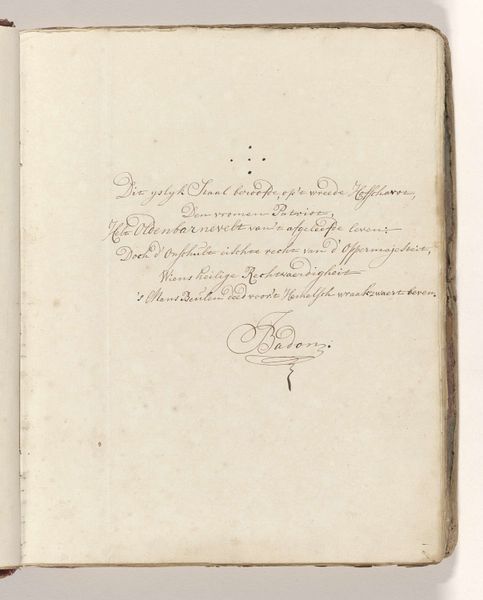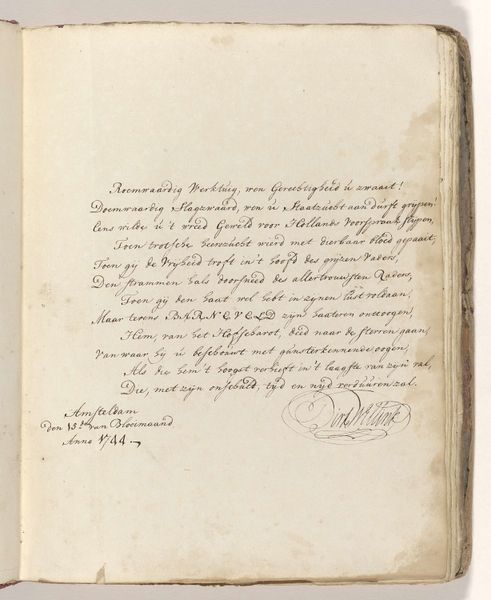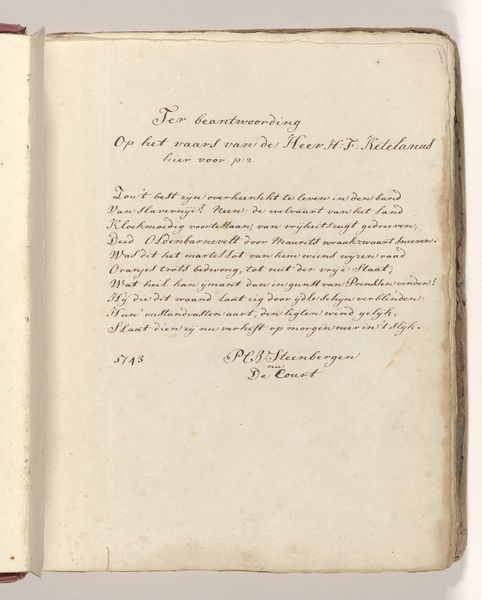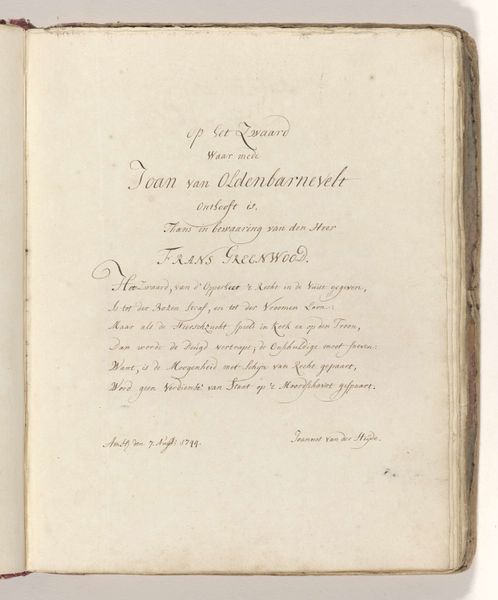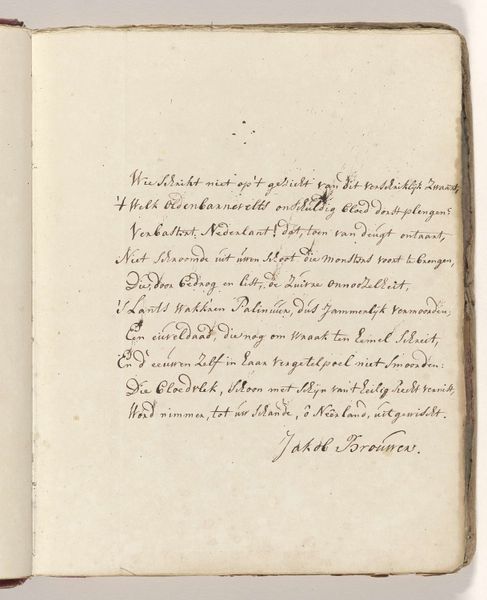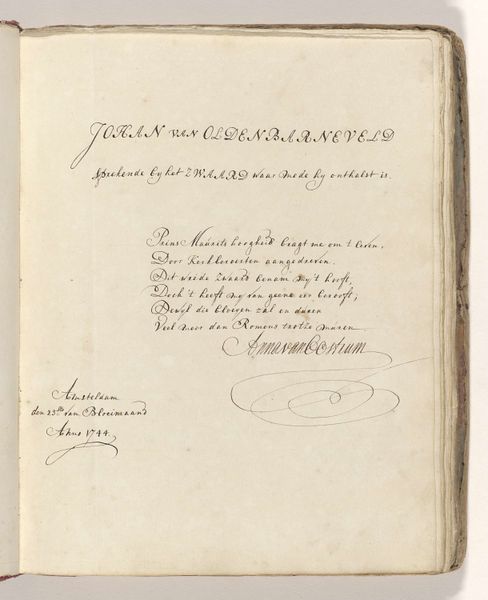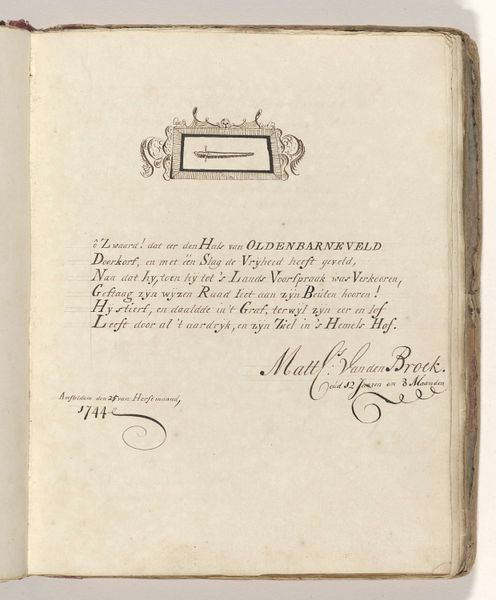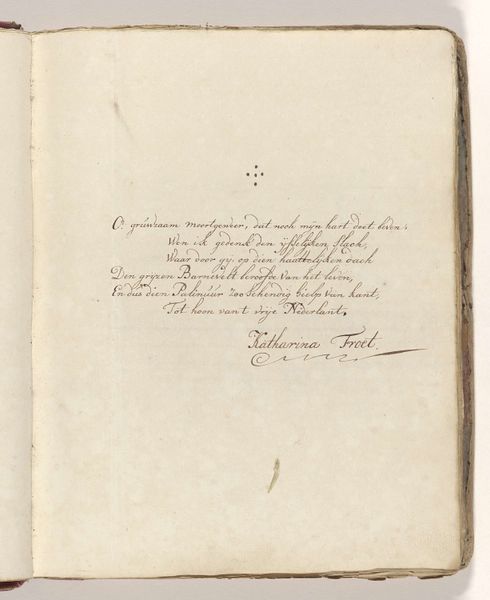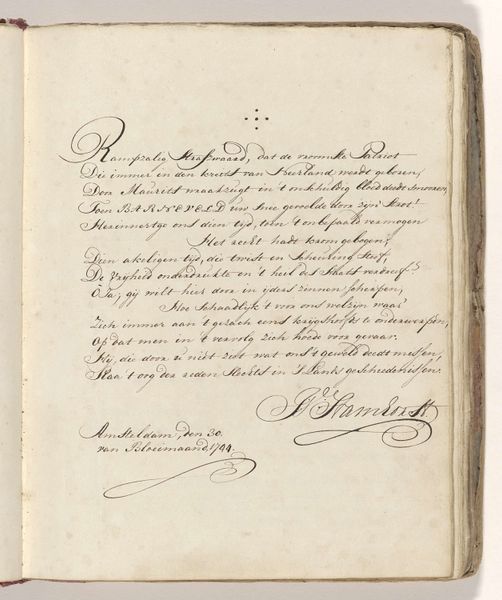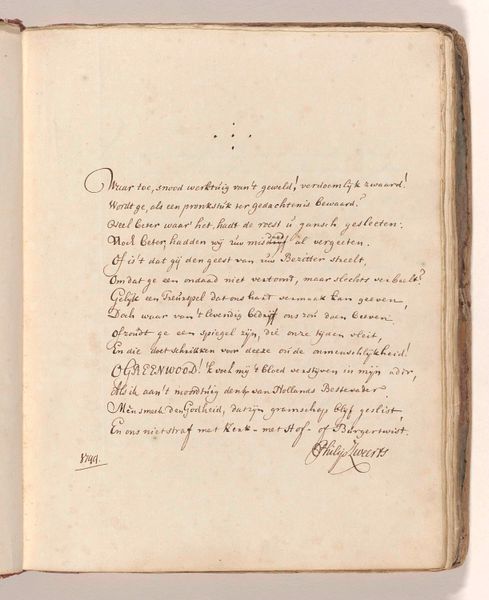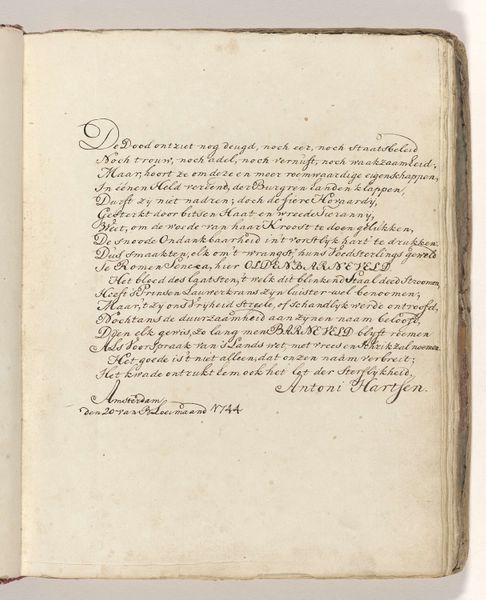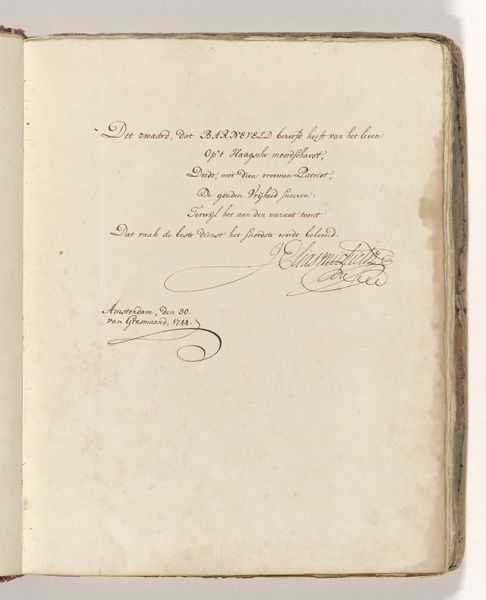
Gedicht op het zwaard waarmee Johan van Oldenbarnevelt in 1619 zou zijn onthoofd Possibly 1744 - 1748
0:00
0:00
Dimensions: height 275 mm, width 220 mm
Copyright: Rijks Museum: Open Domain
Curator: Looking at this piece, I'm struck by its quiet defiance. It's deceptively simple, yet there's so much contained within. Editor: Indeed. We are looking at a drawing titled "Poem on the sword with which Johan van Oldenbarnevelt was allegedly beheaded in 1619" by J.s de Later, probably dating from 1744-1748. Executed in ink on paper, it presents a powerful message in a beautifully rendered script. Curator: "The sword speaks," that's quite a premise! To give a voice, literally, to an instrument of death. There’s something intensely poetic about that, a hint of magical realism even. What do you think De Later might be trying to convey here? Editor: In examining this poem within its historical context, we can understand how this work participates in a discourse of mourning and social justice. Oldenbarnevelt's execution was a hugely contentious political event. It is a moment in Dutch history where the lines between justice and political vendetta become incredibly blurred. A sword is rarely a neutral object, so its personification can reflect deep sentiments. Curator: I agree! And it is hard not to consider its lasting emotional reverberations when reading a text as stark and elegant as this one. De Later turns an event from over a century prior into a poignant reflection on power, loss, and possibly, redemption. I wonder what it was like to create this; how long did it take the artist to inscribe these perfect lines? Editor: Calligraphy itself is an interesting vehicle here, connecting as it does to traditions of religious writing, while in this case channeling this more rebellious statement. Curator: It is rebellious. To subtly challenge an old wound in the fabric of Dutch society so long after it was inflicted. A true demonstration of "the pen is mightier than the sword,” don't you think? Editor: In this case, yes! And looking at it with today’s perspective, art remains a potent form of activism, remembrance and engagement with the past. Curator: Beautifully said. It makes me see this work in a new light entirely! Editor: Me too! It's amazing what emerges when we delve into history and passion!
Comments
No comments
Be the first to comment and join the conversation on the ultimate creative platform.

